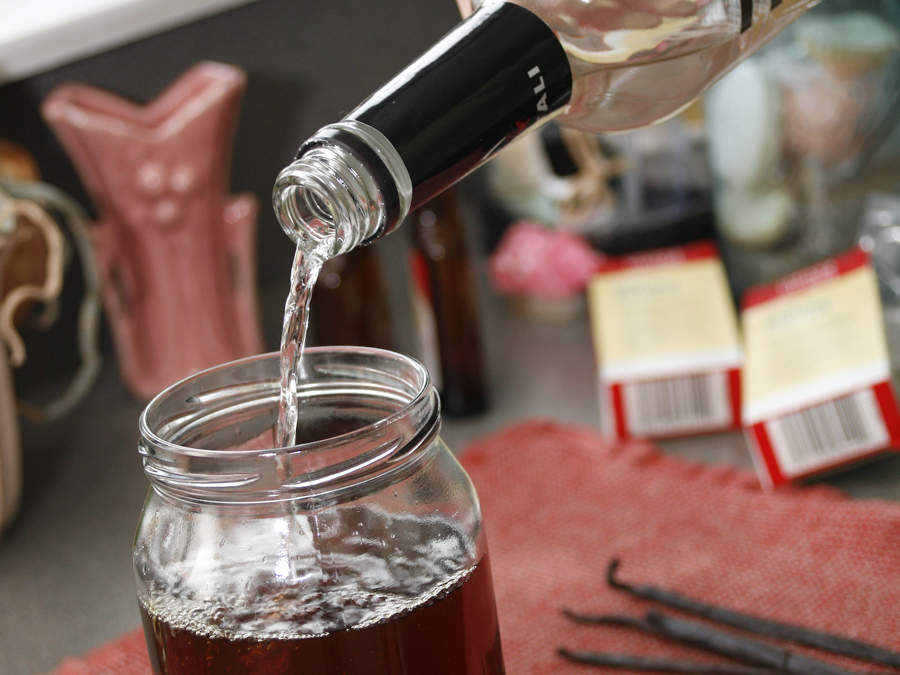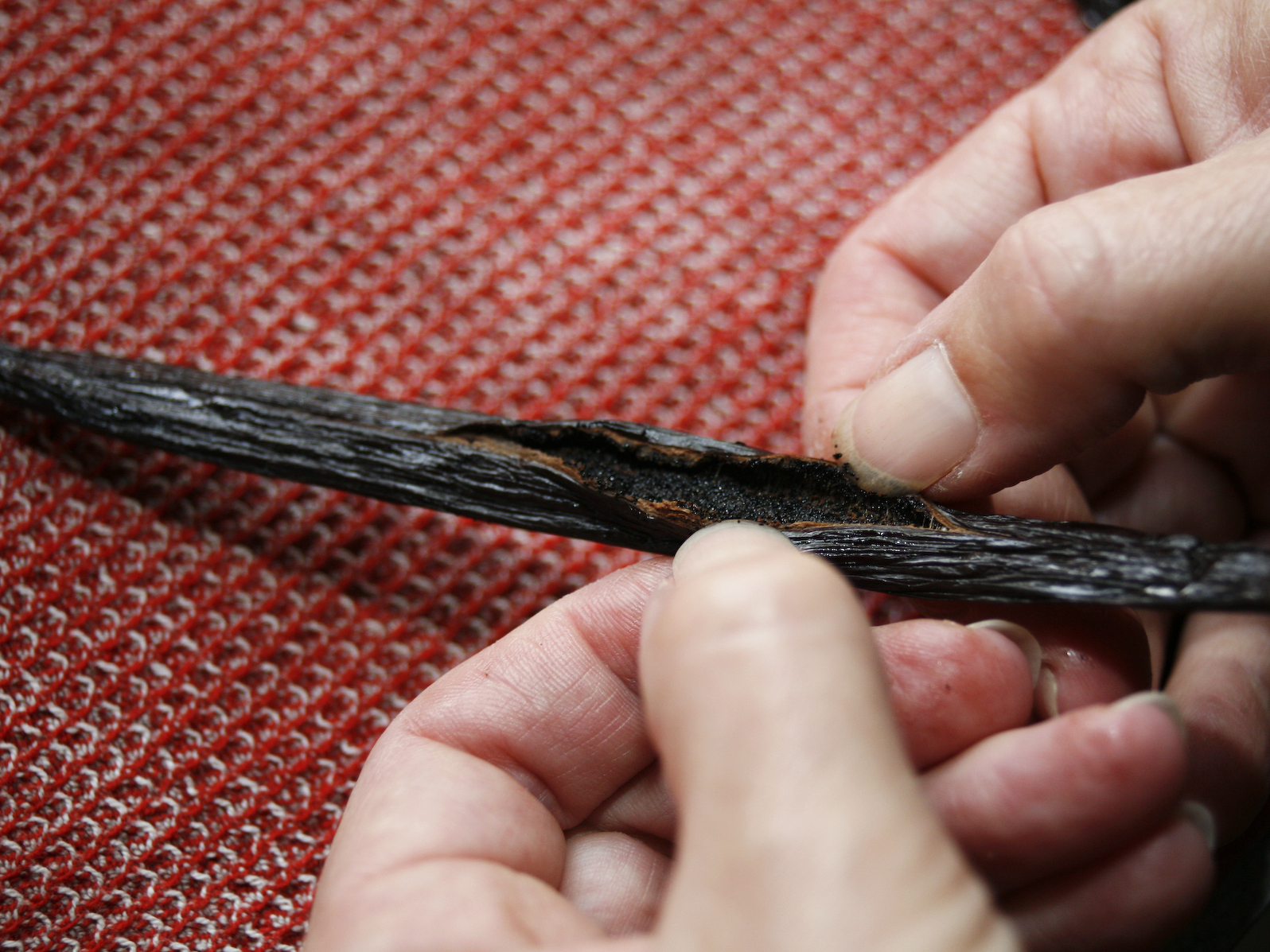Before you start jumping to all kinds of wrong conclusions about me, let me tell you what I don’t do. I don’t bake my own bread, roll my own pasta, or simmer my own stocks. I don’t make my own yogurt, cheese, beer, wine, or jam. I don’t grow my own vegetables or herbs. I don’t, as a matter of course, can, pickle, bottle, or preserve much of anything. If you imagine my fridge and shelves are full of anything other than what I bought at the supermarket last time I was there, I’m sorry to say you’re sorely mistaken.
I’ve told you all this not because I’m looking for your sympathy (or scorn), but so you can better appreciate the following. I do make my own vanilla extract, and if I can do it, I’m certain you can, too.
There are certainly more scientific ways to go about making vanilla extract, where you use a set ratio of beans to alcohol and let it sit exactly X number of weeks. The beauty of this method, however, is that aside from the very beginning, you’re only using spent beans to make it (which feels delightfully frugal), and once you get the ball rolling, as long as you keep using vanilla beans in your kitchen, you’ll have an unending supply of extract on hand, too.
Also, consider the fact that extract made this way keeps getting better and better with every bottle you produce. Pretty nifty, no?












